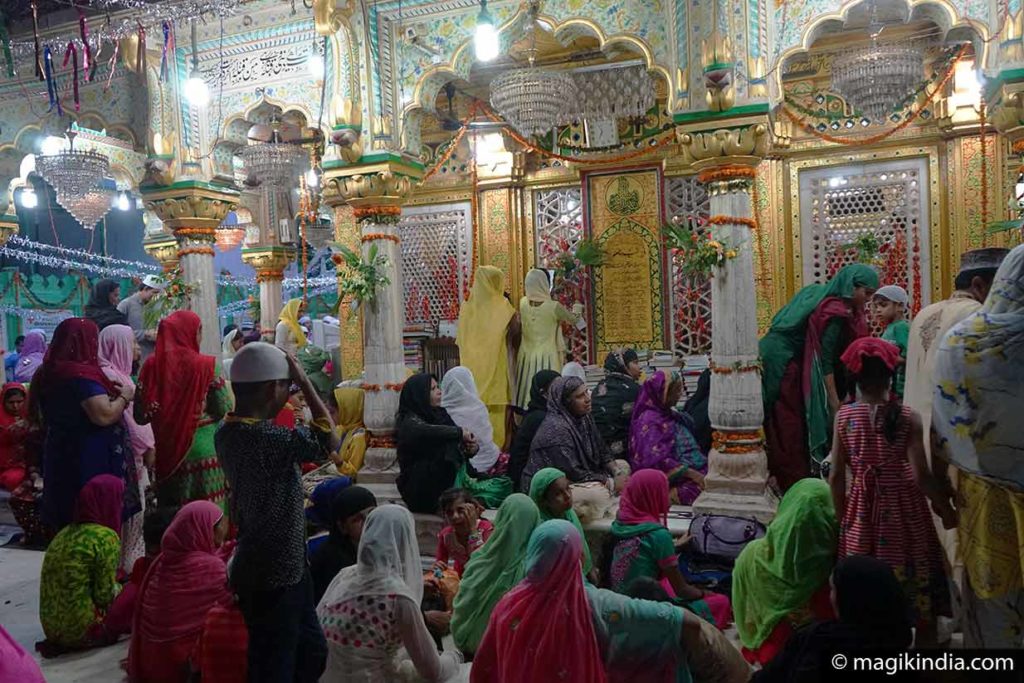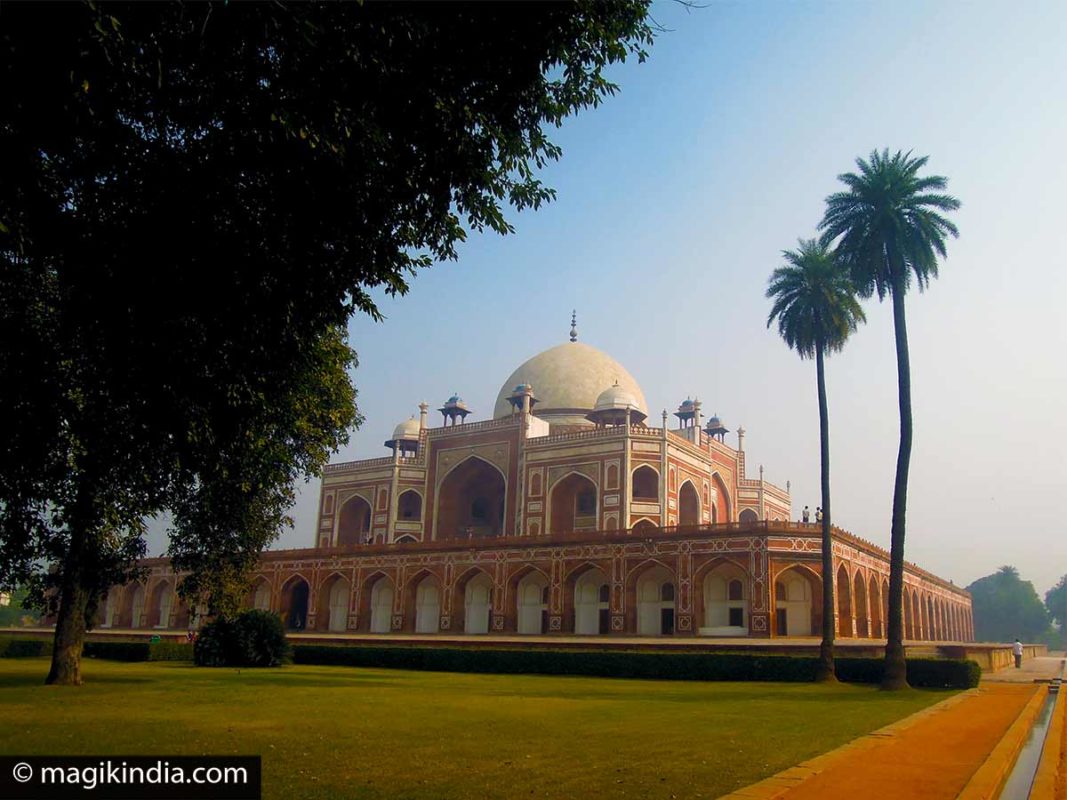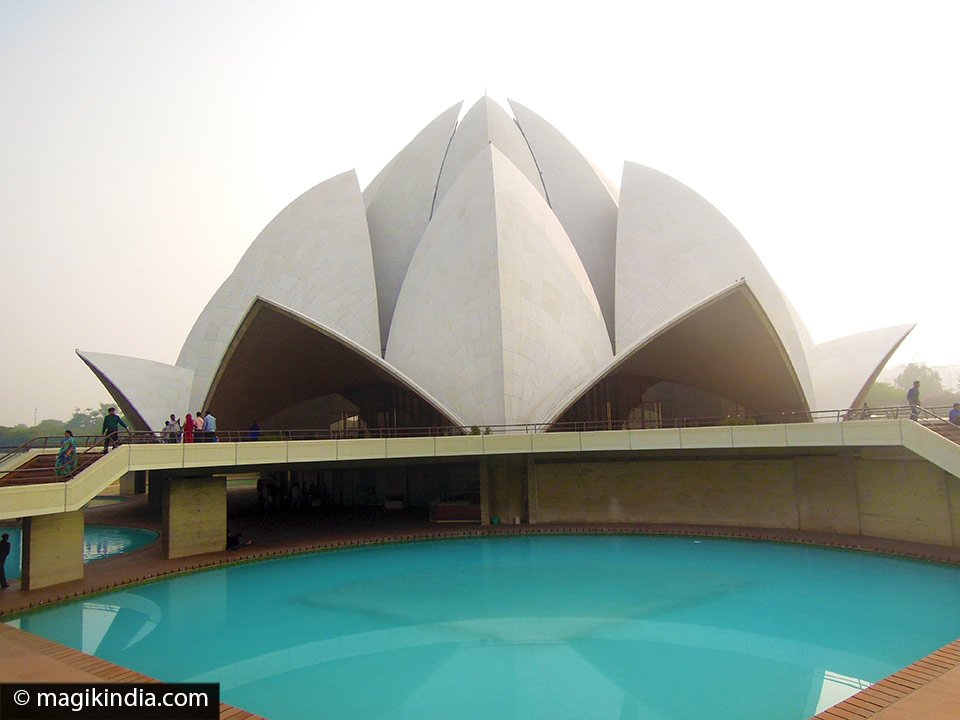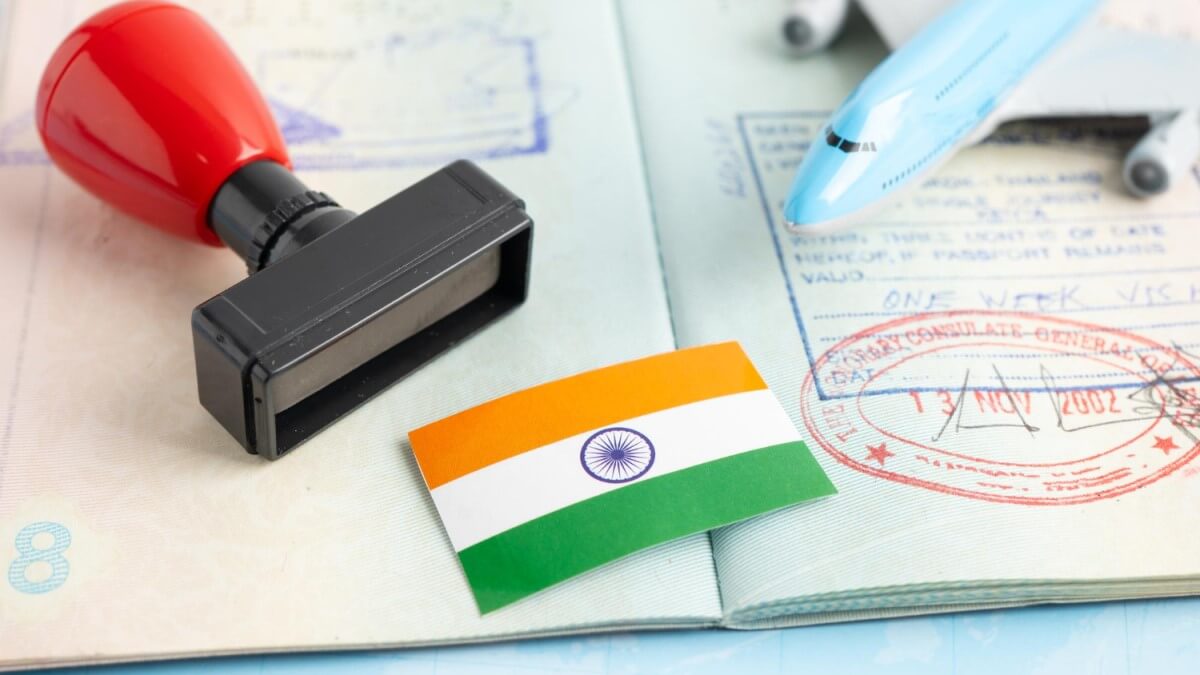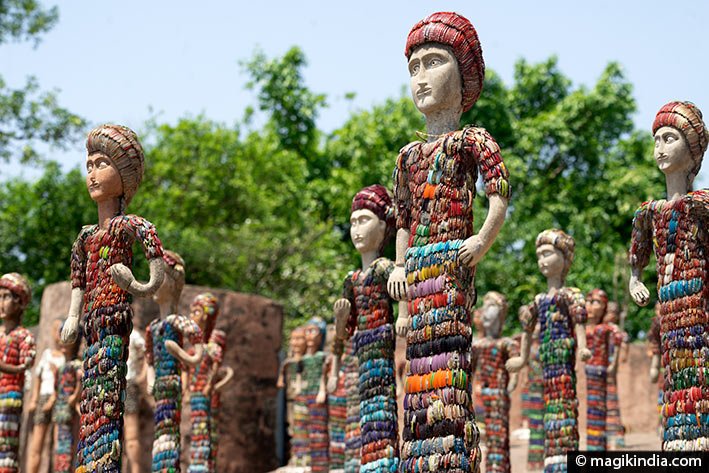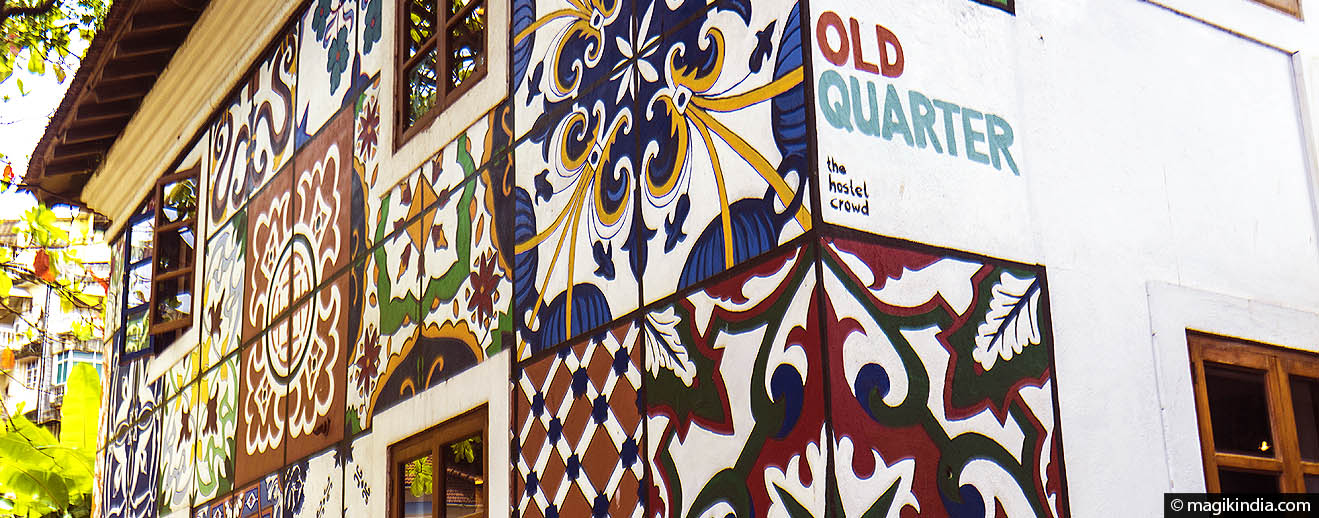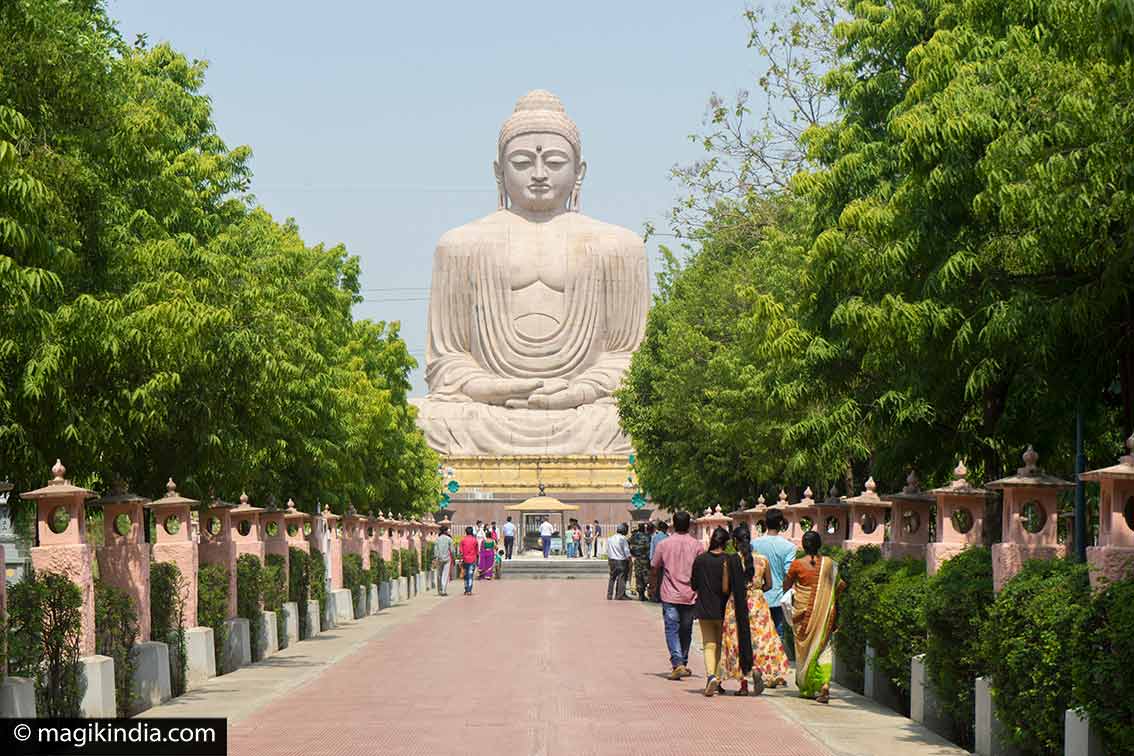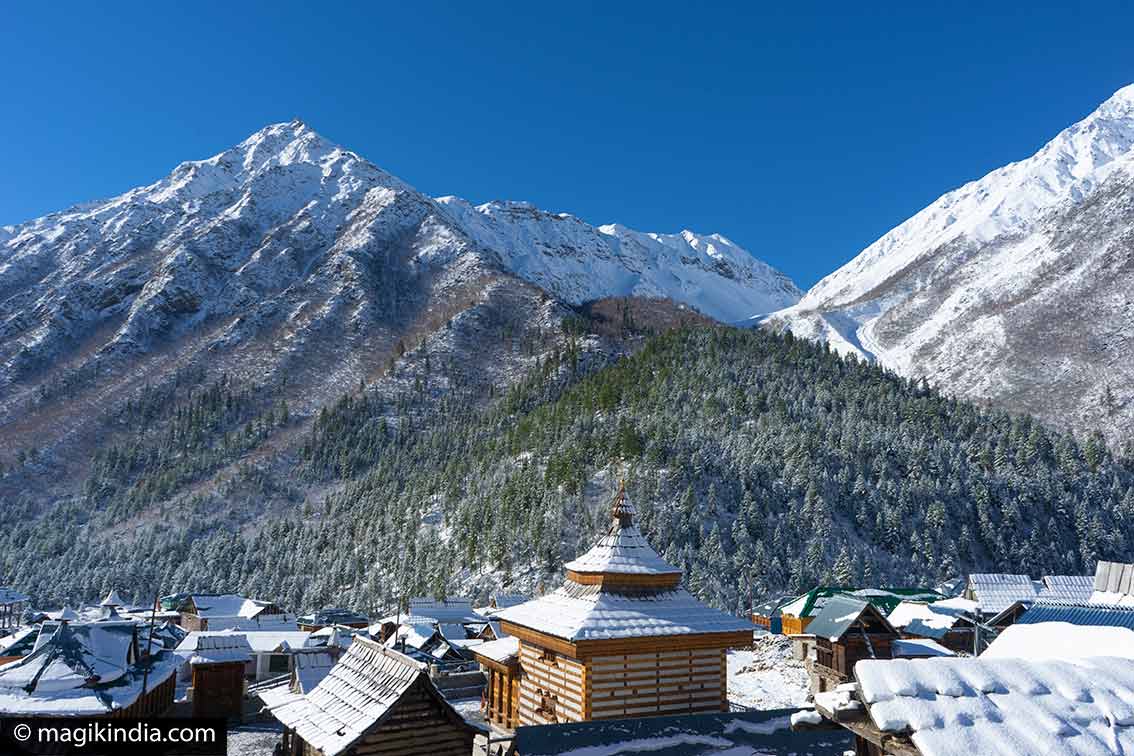Delhi, New Delhi & Old Delhi
Delhi is a union territory and within it is New Delhi, capital of India. Delhi is a megacity where ultra-modern buildings rub shoulders with old open-fronted shops and narrow-laned bazaars. The great megacity may not appeal at first glance, but the vestiges of its Mughal history may slowly work their charm on you.
Historically, Delhi has been the capital of several Indian empires. In 1526 the Mughals established their capital in what is now known as Old Delhi. In the early 20th century, the government of British India moved the capital from Calcutta (now Kolkata), which was considered too far from the country’s centre, to Delhi – or rather to a new town built just south of the old city. New Delhi became the capital of India in 1911. In 1947 the newly independent country confirmed New Delhi as its capital.
New Delhi is often confused with Delhi. In fact New Delhi, the seat of government, is a municipality with a population 250,000 within what is officially called the National Capital Territory of Delhi, which has a total population of nearly 17 million.
Festivals not to miss
India Art Fair
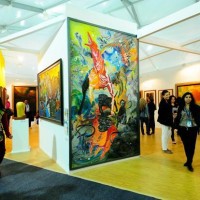
Art Fair takes place in New Delhi in January and welcomes visitors to the largest contemporary art event in South Asia. Offering a unique opportunity to discover the best galleries in the region and beyond, India Art Fair’s programme includes lectures, projects and events across the capital with an emphasis on cultural experience and education. www.indiaartfair.in
Jazz Utsav Festival
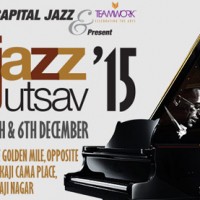
The Jazz Utsav is a 2 day festival of Jazz featuring some of the best known jazz artistes from India and across the globe. It is in its 31st year, and has in the past featured some of the best names in the Jazz world, like Sonny Rollins, Larry Carlton and Wayne Krantz. This year the headliners are Rudresh Mahanthappa’s Gamak from USA, and Artur Dutkiewicz Trio from Poland on the 5th and 6th respectively. jazzutsav.teamworkarts.com
Delhi International Arts Festival (Diaf)
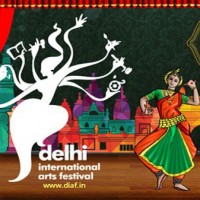
Delhi International Arts Festival, the first multi art, multi venue annual cultural festival made its debut in Dec 2007. For 8 years now, DIAF has been the most influential and prestigious arts festival of Delhi. The festival annually gives Delhi a rich artistic skyline comprising visual and performing arts, films, literature. An umbrella festival of all genres of music, dance, theatre, puppetry, literature, poetry, films etc. iboblr.in/~diaf/
Qutub Festival
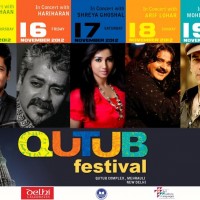
The Qutub Festival of Classical Music and Dance is held in the month of November-December to commemorate the historical importance of Qutub Minar. Set against the majestic backdrop of the Qutub Minar itself, this annual cultural extravaganza is an endeavor to present a cross section of performances by various Indian artistes. Visitors to this exotic dance festival can expect to see classical dance performance by reputed artists, listen to beautiful renditions of ghazals and qawwalis and be mesmerized by Sarangi and sitar recitals. www.seher.in/qutub.htm
International Mango Festival
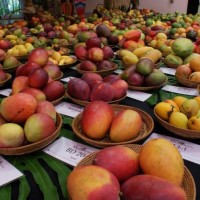
The International Mango Festival, held annually in Delhi, India during early summer, is a two-day festival showcasing mangoes.More than 550 varieties and cultivars of mango are featured in the festival for visitors to view and taste. Activities in the festival include cultural programmes and recreational events like a mango eating competition, mango slogan writing, a demonstration of mango carving, a magic show, and a quiz about mangoes.
And now, let’s visit Delhi!
Chandni Chowk (Old Delhi)
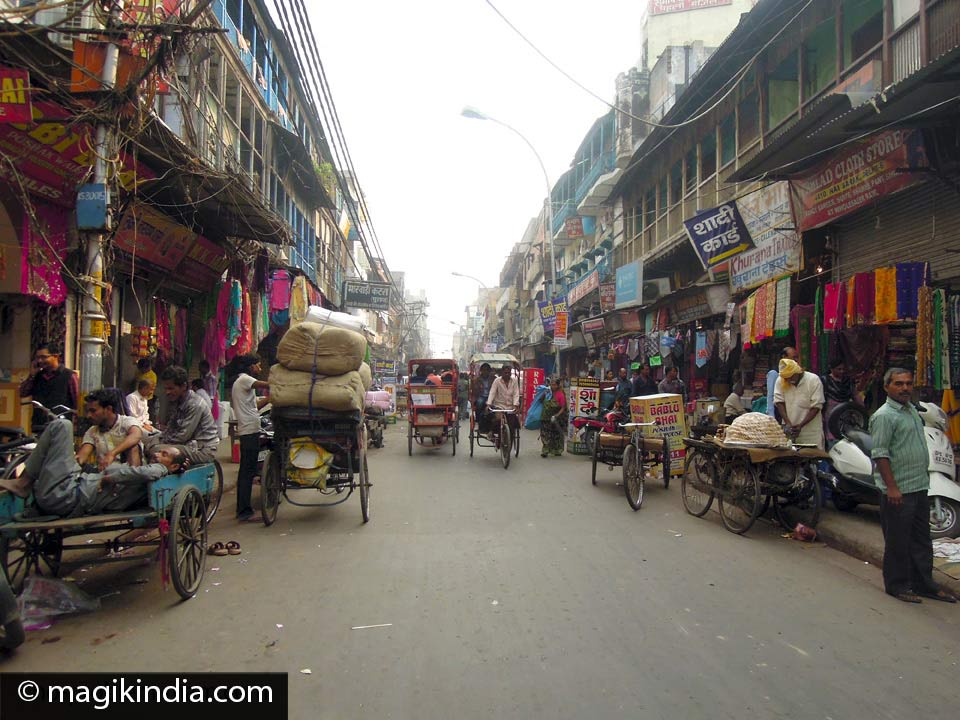
We start the tour of the capital of India with my favorite place, the Chandni Chowk, an immense bazaar in Old Delhi, built in the 17th century by the Mughal emperor Shah Jahan. It is a beehive of activity and one of India’s biggest wholesale markets.
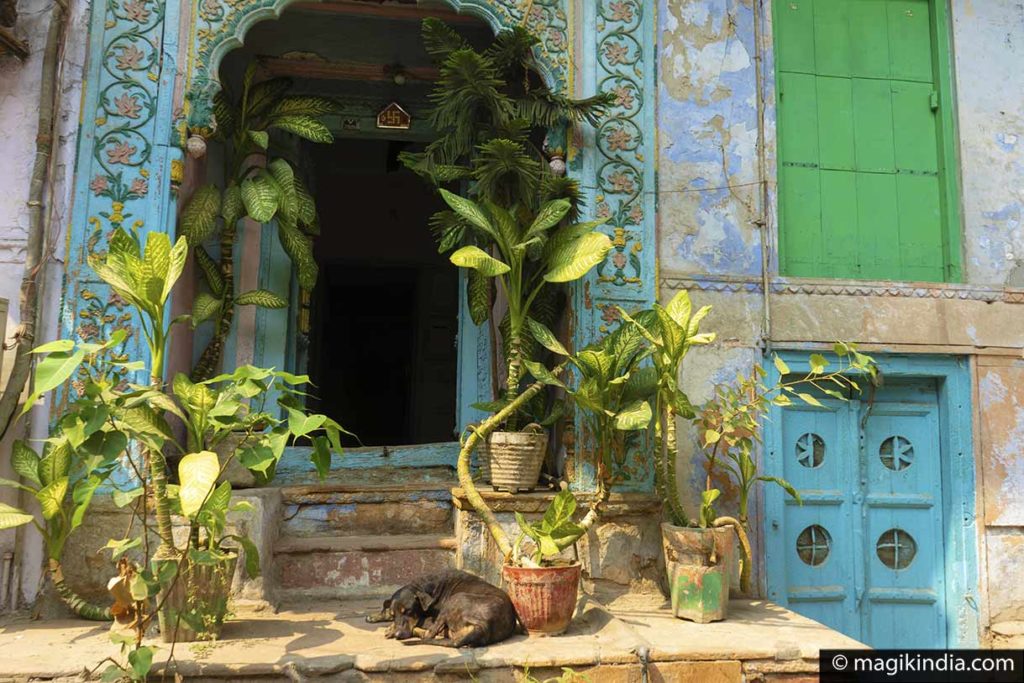
What do I like about Chandni Chowk? Get lost in the maze of buzzing “galis” (alleys), Sneak your way into the undulating crowd, stop to taste some local snacks, inebriate yourself in fragrances or simply sit on the steps of an ancient temple and observe the life of the place.
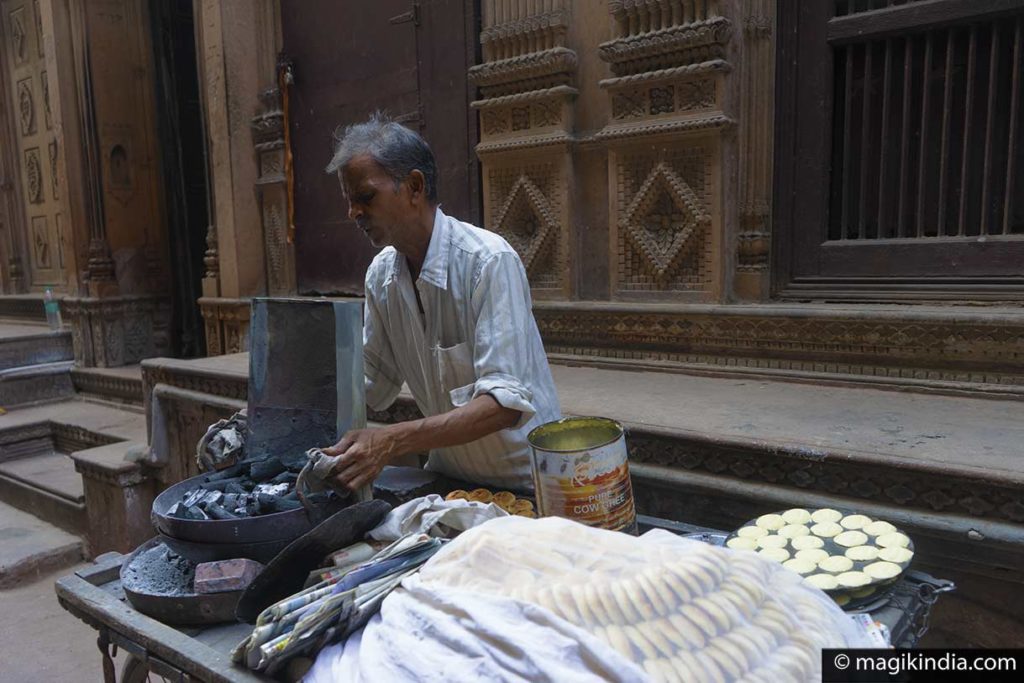
As I stroll through the labyrinth of small streets of Chowk, the entrance to a house decorated on both sides with floral patterns and elephant sculptures, attracts my attention. A butler salutes me with a Namaste and a brass plaque gives me the name of what seems to be a prestigious residence: the Haveli Dharampura.
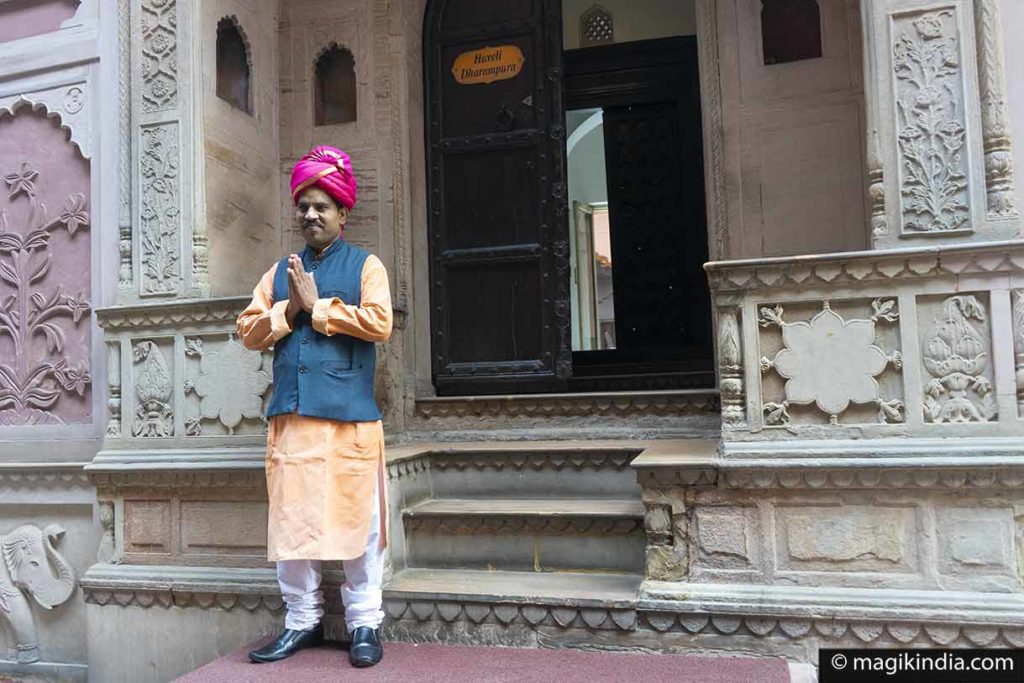
This place piques my curiosity. I ask to visit the mansion, which turns out to be a charming 4-star hotel. The manager welcomes me in person and it is with great pleasure that I follow him in the different rooms that have been tastefully renovated keeping the original character of the place while adding contemporary design to it.
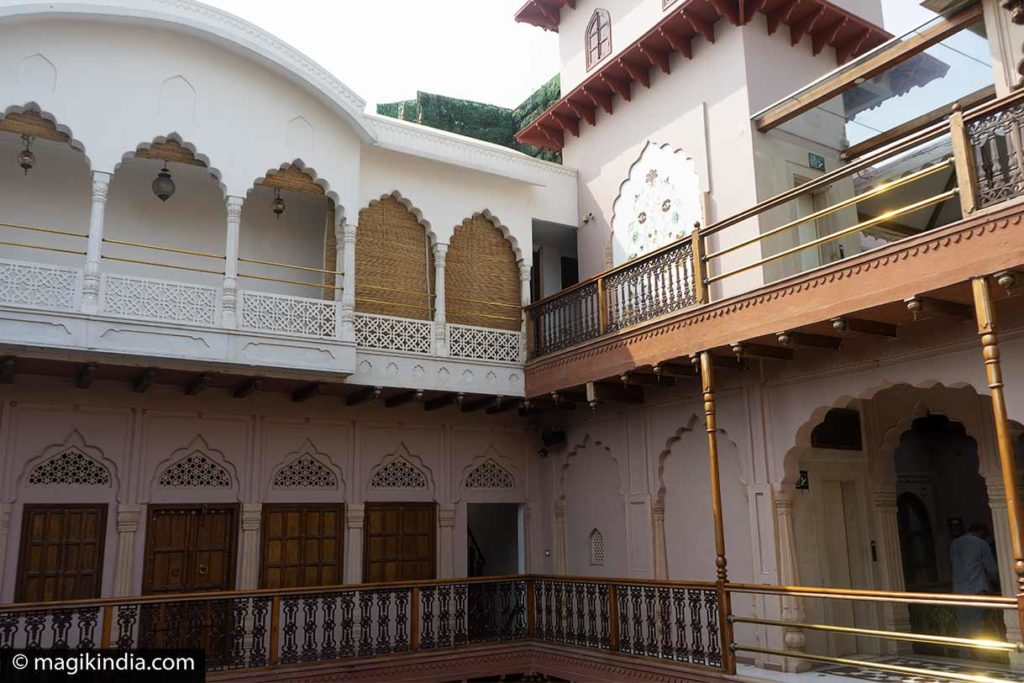
During the Mughal period, a large number of havelis (mansions) were built by courtiers in the Mughal city of Shahjahanabad, which is now known as Old Delhi. The Dharampura haveli is one of those constructions attributed to the late Mughal style (around 1887), although part of it was added in the 20th century. There are five mansions of this style in Old Delhi, the haveli Dharampura is the only one that has been restored so far.
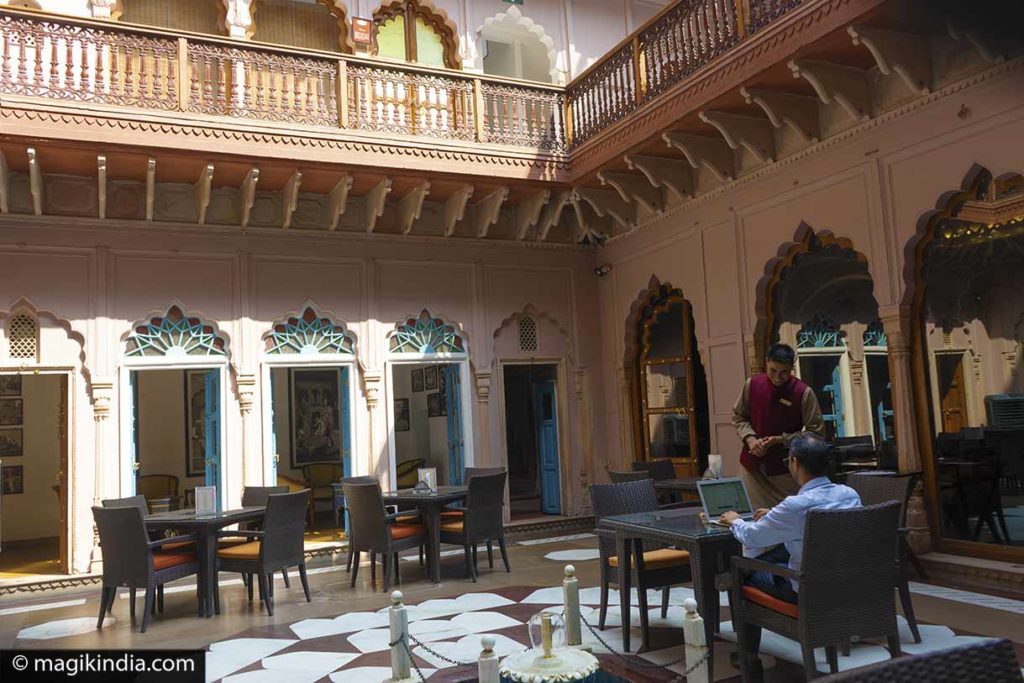
After this delightful visit, a true haven of peace in a place that never seems to calm down, I continue my way to the most famous gali of the Chandni Chowk: the ‘Parantha Wali Gali’, or “street of paratha vendors”, which is now famous far beyond India’s borders. Parathas are a kind of fried flatbread; some restaurants have made a speciality of them and proudly announce the many celebrities who have come to eat there – starting with the Ghandi and Nehru families.
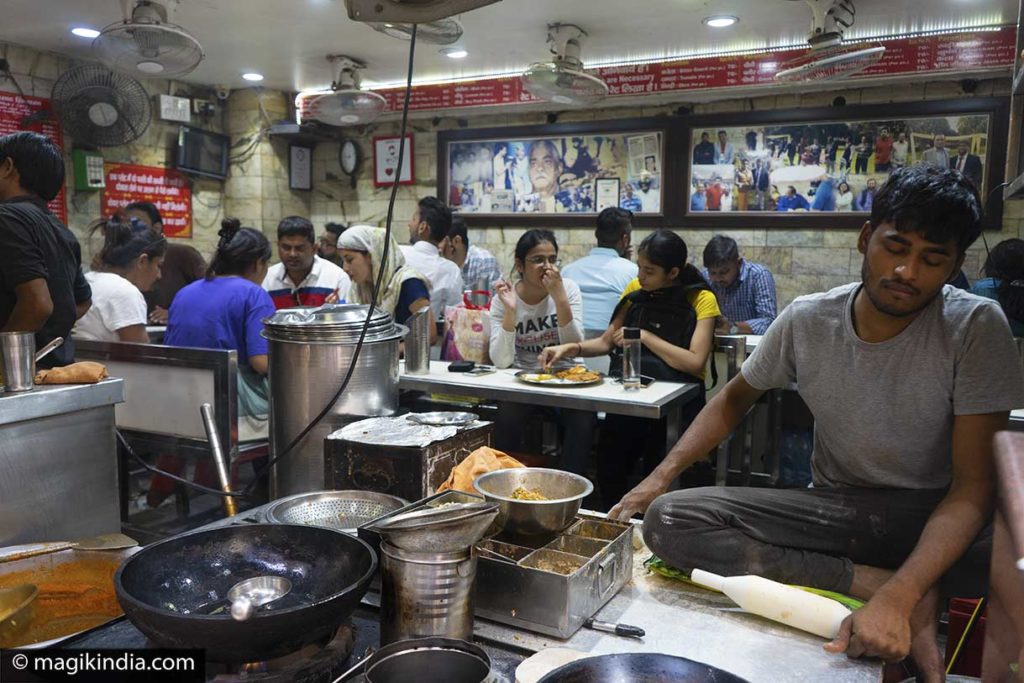
It’s time for a lunch break , I can not fail to taste these famous paranthas. In India, the culinary temptations are on every street corner and you will quickly become a real foodie.
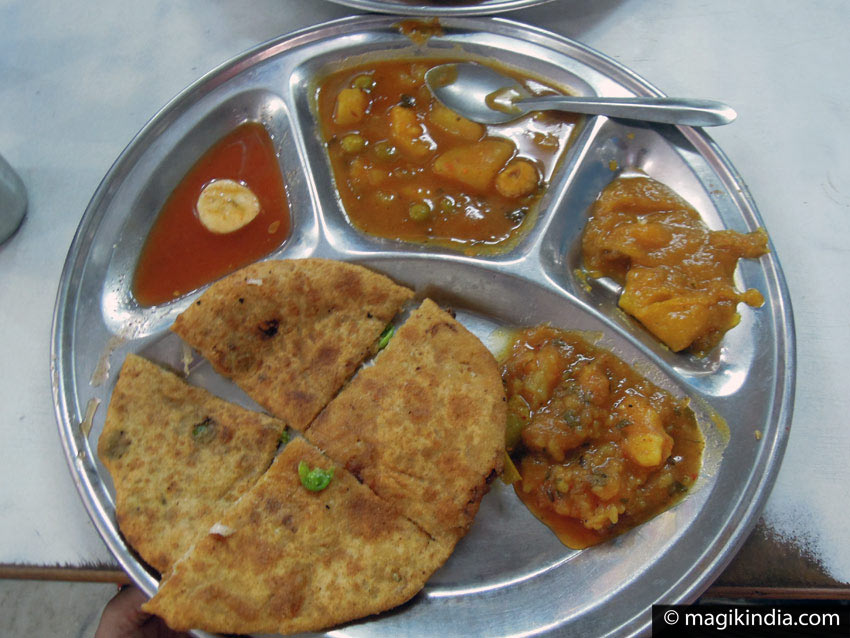
After this meal interlude, I take the direction of the Chandni Chowk Road, I pass in front of the very colourful wedding shops and, continuing straight, I come across several religious buildings, among them, the Hindu temple Gauri Shankar, the Gurudwara Sis Ganj Sahib ji dedicated to the Sikh faith and the Shri Digambar Lal Mandir, one of the most famous Jain temples of Delhi recognisable by its tall red steeples. The sumptuous interior is definitely worth a look!
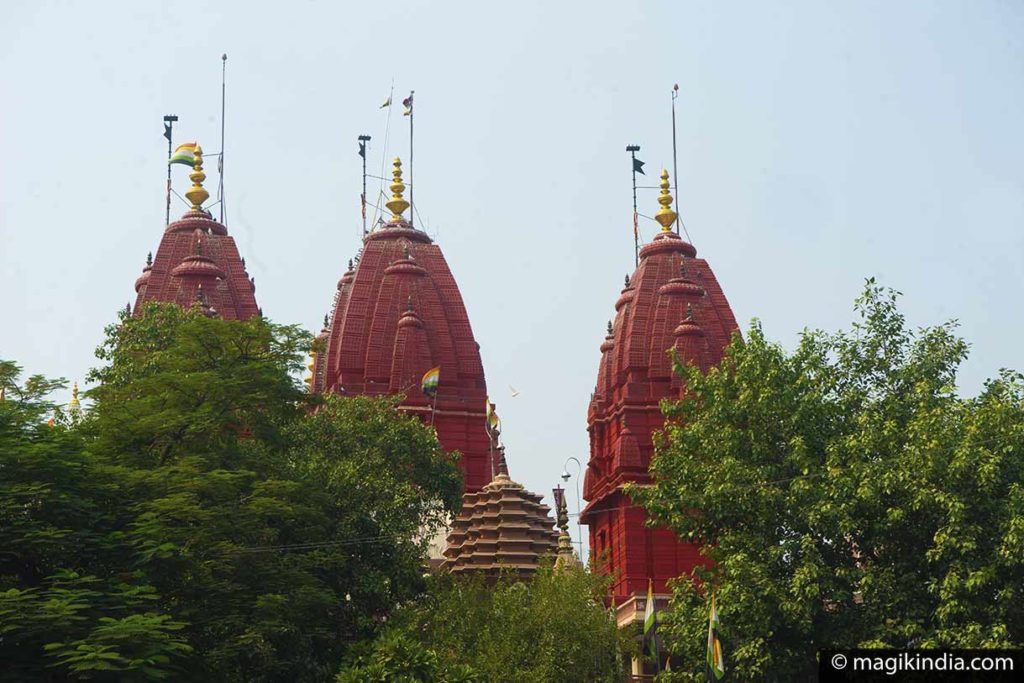
Right in front of the Shri Digambar Lal Mandir, I see imposing red walls, it is the red fort or “Lal Quila” in Hindi.
Red fort (Old Delhi)
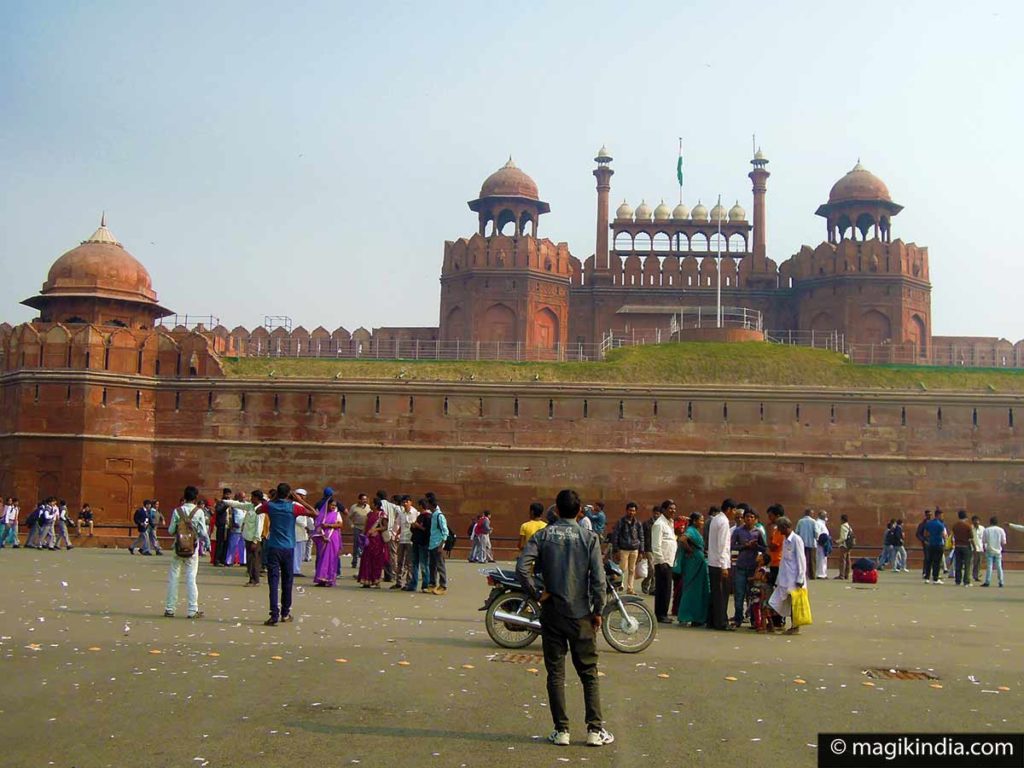
Spread over 103 hectares and surrounded by 3 km of fortified walls, this fort was the residence of the Mughal emperors. Shah Jahan, the fifth Mughal emperor, commanded this fort when he moved his capital from Agra to Delhi. This fortress-palace was the central point of the city of Shahjahanabad, today called Old Delhi. The red fort was then considered to be one of the most refined architectures of its time mixing Persian, Hindu and European styles with beautiful geometric gardens, courtrooms adorned with delicate marble, several mosques, a stepwell, several pavilions and royal palaces linked by a canal known as Nahr-i-Bihisht, the stream of paradise.
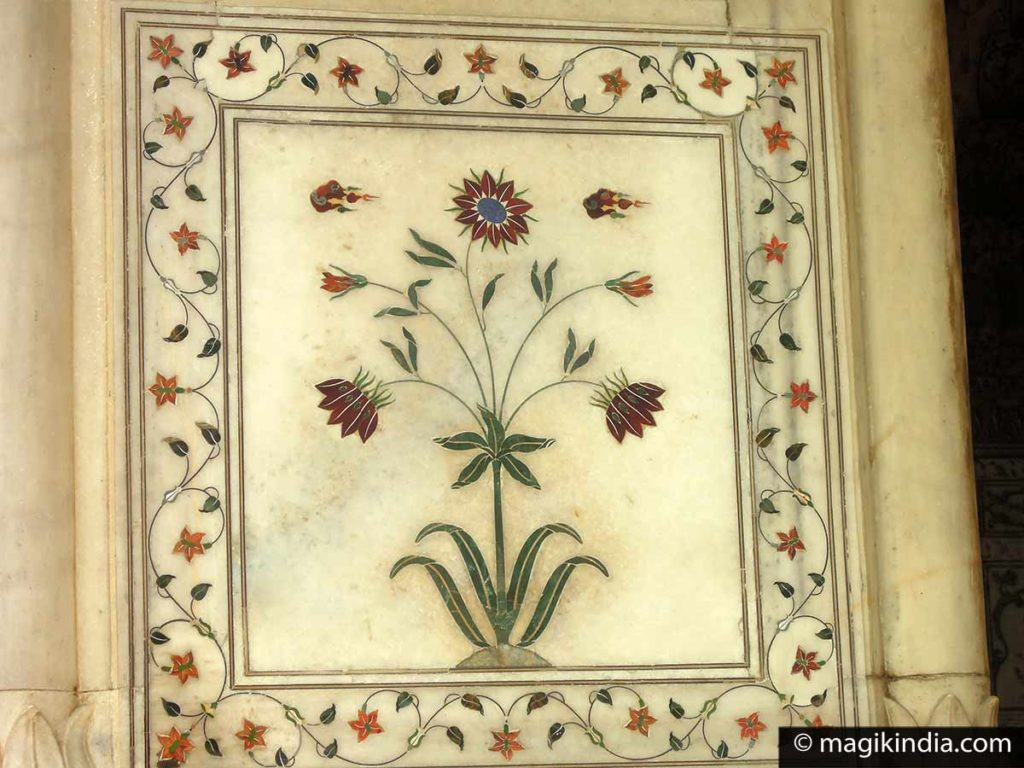
When discovering this fort, it is very likely that you will be a little disappointed. Its defensive walls have been mostly spared but what has been left of this fortress today is only the very pale reflection of former glories. The royal complex was extensively looted from its jewelry, works of art and furnishings during the British Raj and was sold to private collectors or to major London museums. The successive wars between the Raj and the Maratha Empire and its reconversion into a military garrison have considerably degraded it. More than two thirds of the interior structures have been destroyed.
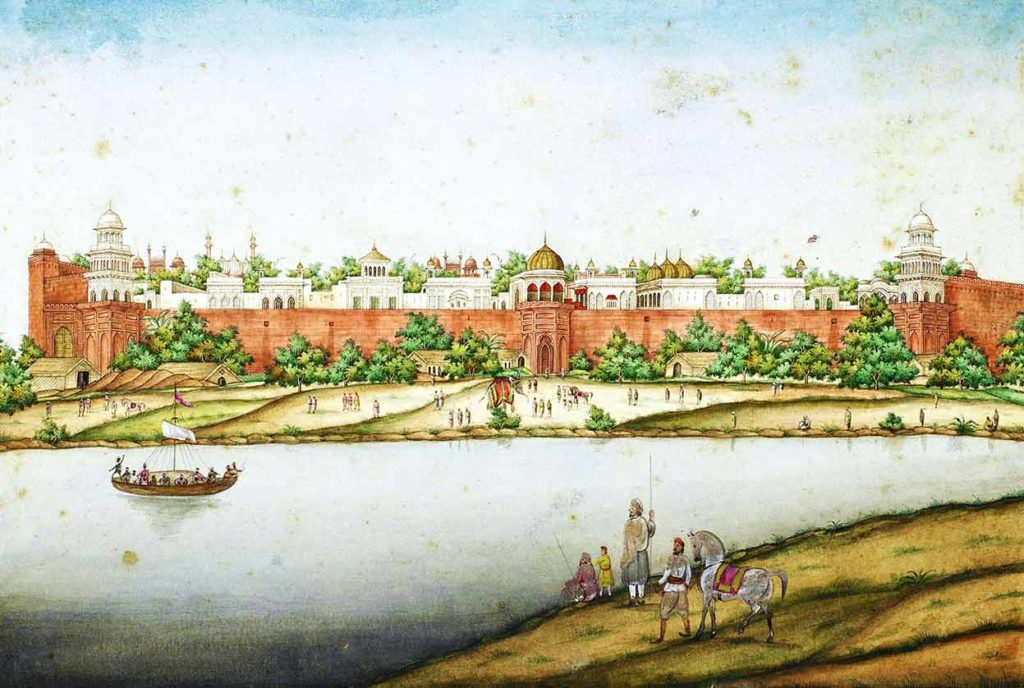
The red fort became a symbolic monument when on August 15, 1947, to mark the independence of India, the first Prime Minister of India, Jawaharlal Nehru, hoisted the Indian national flag for the first time above the Lahore gate. This ceremony still continues today.
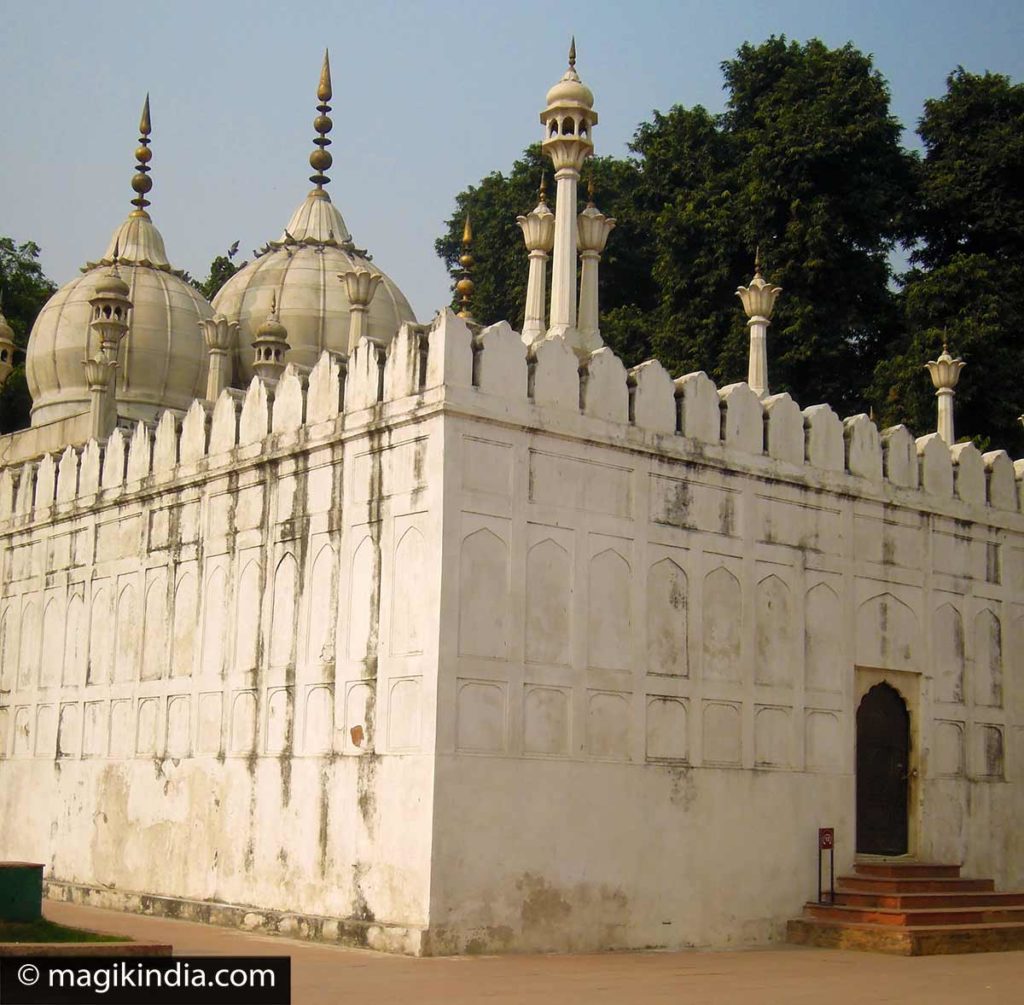
Jama Masjid (Old Delhi)

We finish our tour of Old Delhi with the Jama Masjid, 1 km southwest of the Red Fort. Built from 1650 to 1656 during the reign of the Mughal emperor Shah Jahan, it is one of the largest mosques in India, accommodating up to 25,000 worshipers. It remained the royal mosque of the emperors until the end of the Mughal period.
The red sandstone and pure white marble building has a rather sober appearance with a huge 2000 m2 courtyard and two 40 m high minarets. A few crystal chandeliers and floral arabesques inlaid in stone contradict the simplicity of the place.
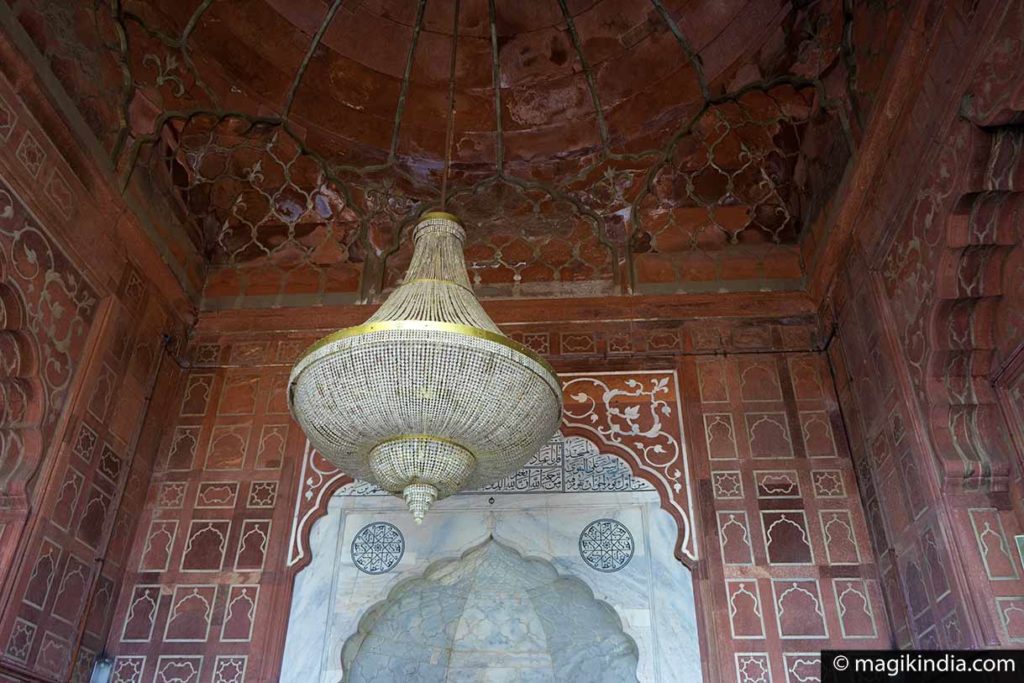
Humayun’s Tomb
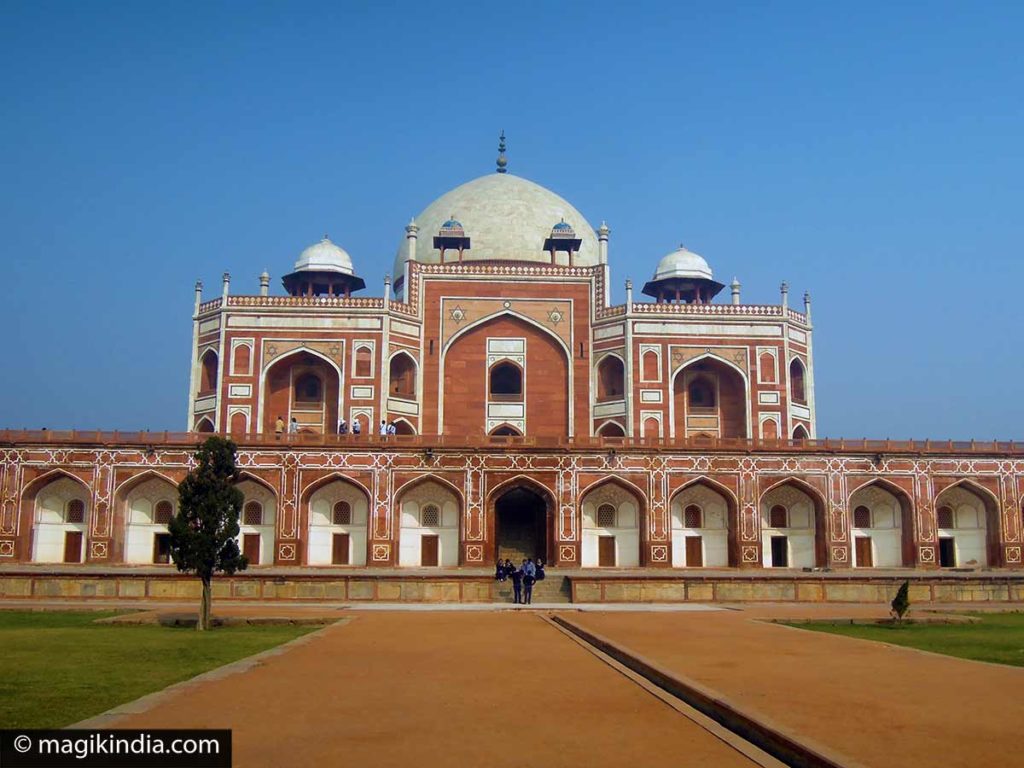
We leave the Old Delhi and head to one of the most beautiful testimonies of Mughal architecture: the tomb of Humayun.
This majestic building, a Unesco World Heritage site is the mausoleum of the Mughal emperor Humayun and was commissioned by his chief wife, Bega Begum, in 1569. It was the first garden-tomb to be built on the Indian subcontinent.
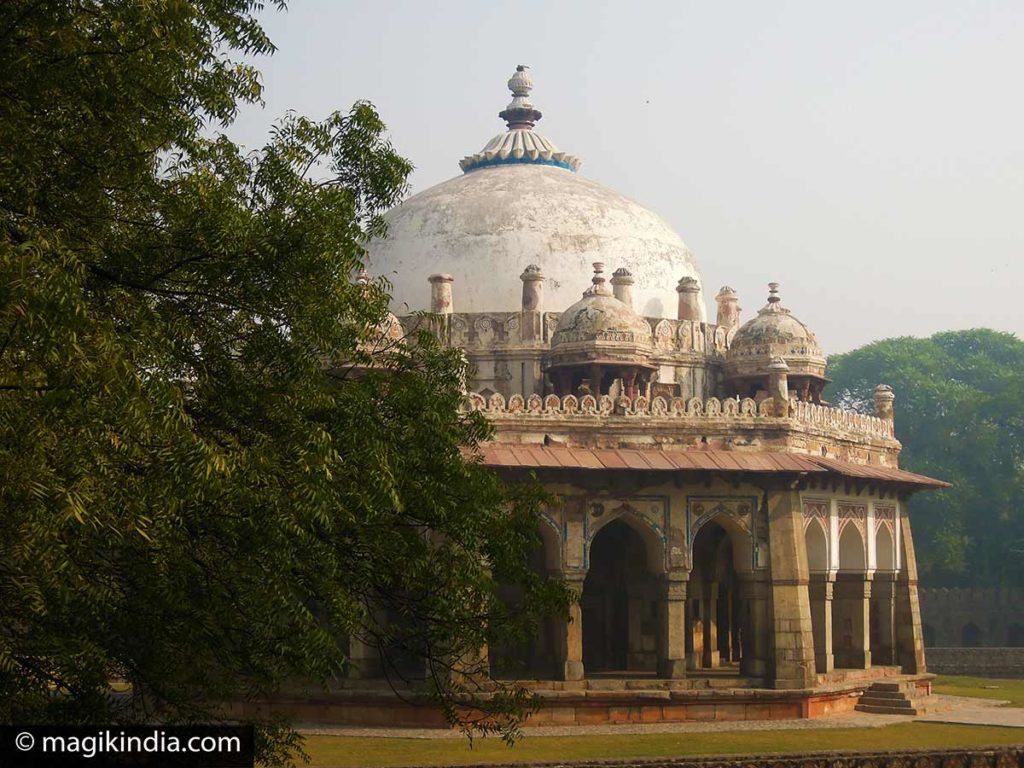
The complex includes the tombs of the emperor, his two wives Bega Begum and Hamida Begum and 150 other members of the royal family. It is said that it served as an example for the design of the Taj Mahal.
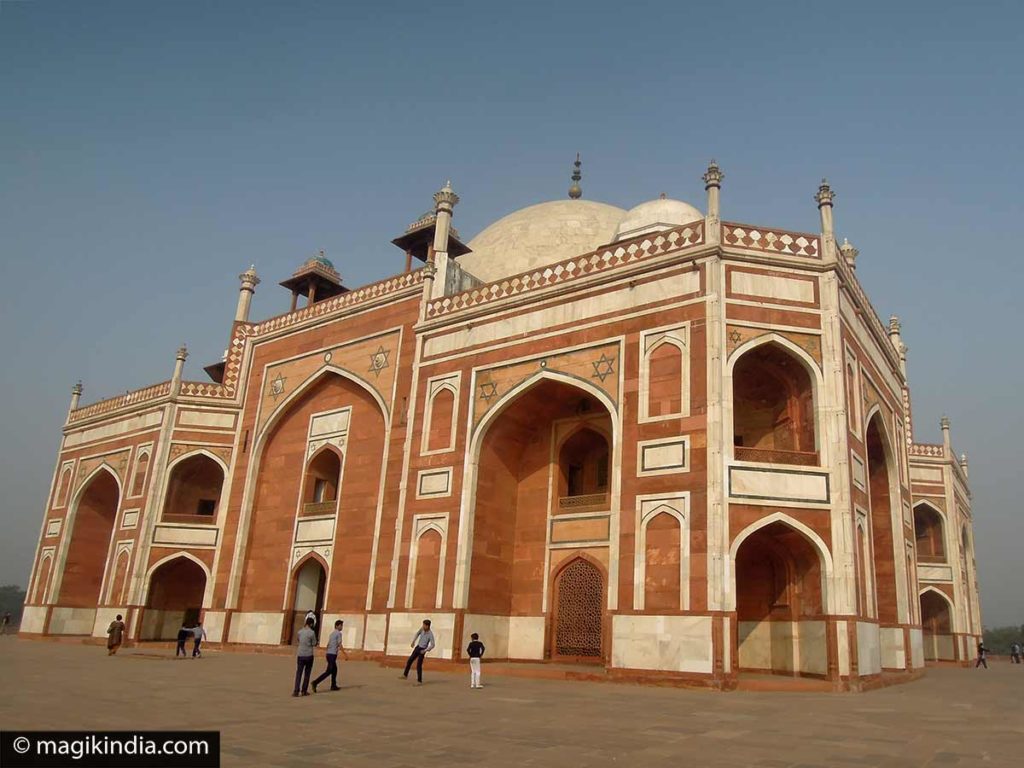
Qutub Minar
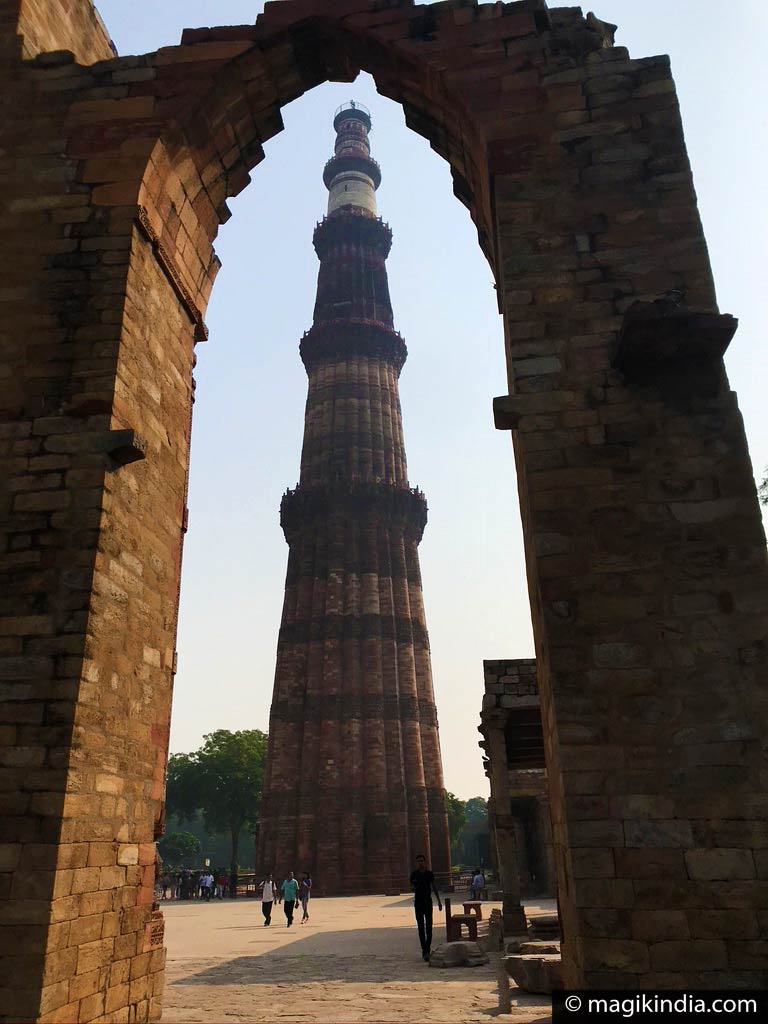
An astonishing monument, the Qutub Minar, the victory tower, is the tallest Indian minaret and the third in the world. Listed as a World Heritage Site, its construction began in 1192 under the order of Qutub Ud Din Aibak, the first sultan of Delhi.
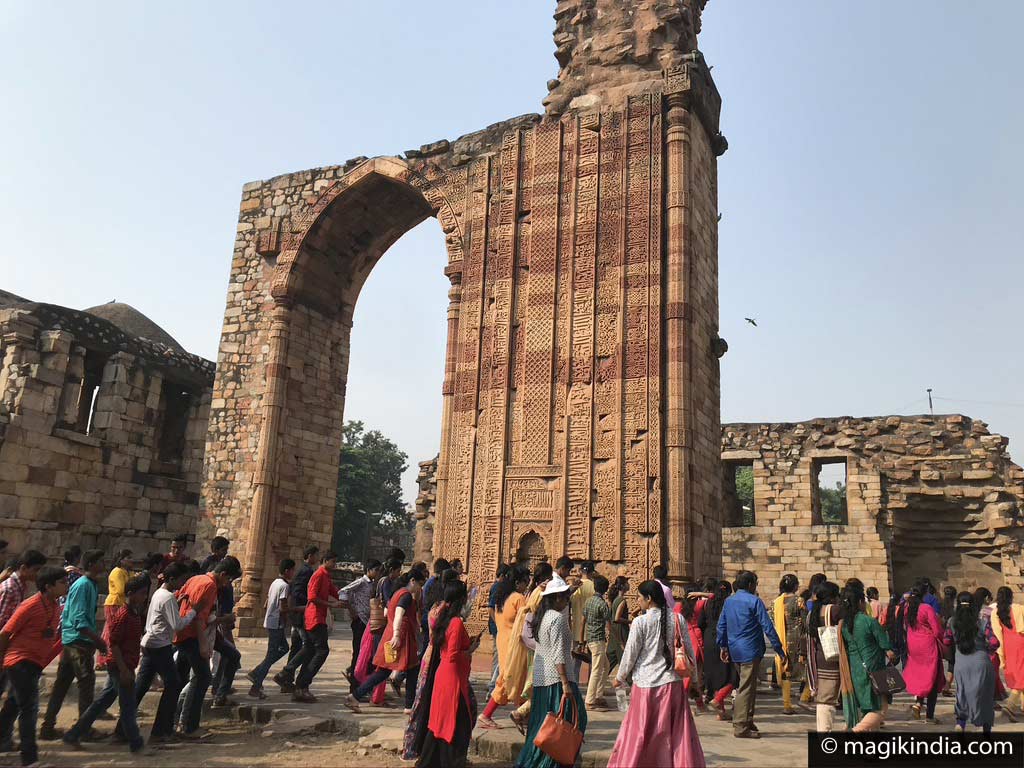
It is over 72m tall, with a diameter of 14m at the base and 3m at the top. Around the minaret is a complex of interesting structures including the Quwwat ul-Islam, the first mosque ever built in India.
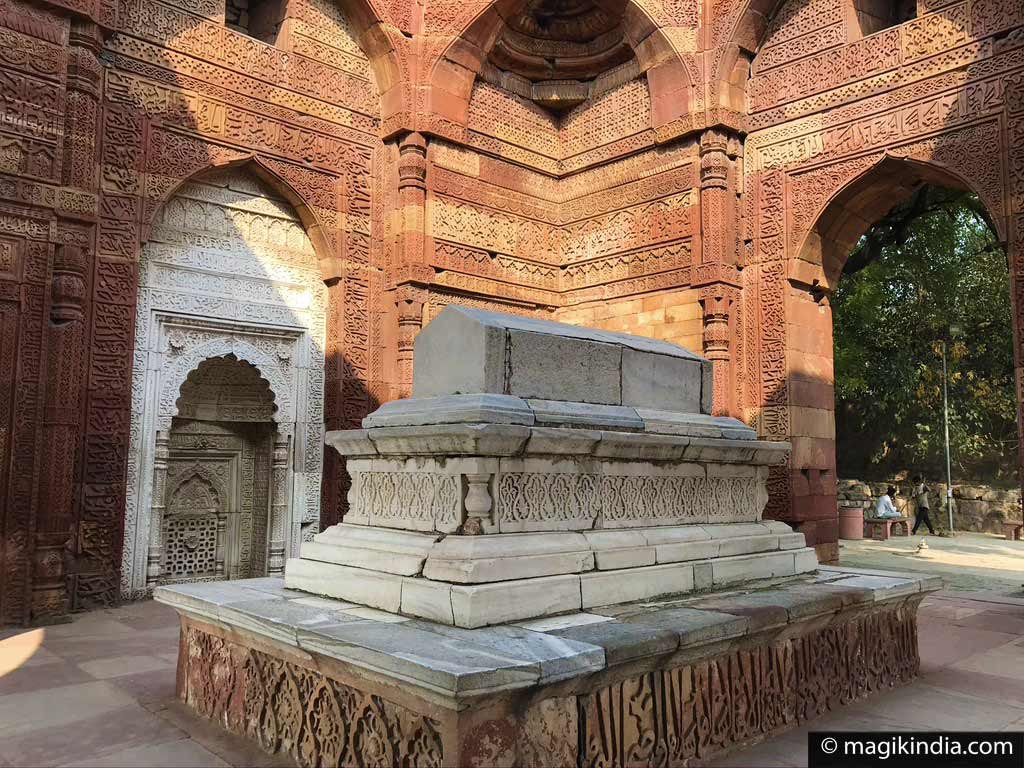
An interesting fact: in one of the complex’s courtyards, stands a long iron pillar with inscriptions in Sanskrit. It is believed that this pillar was the standard of the god Vishnu, erected in the 4th century CE in memory of a king named Chandra, generally identified as the emperor Chandra Gupta II. The pillar, which would have been moved from its place of origin, is famous for being resistant to corrosion, which testifies to the high level of skill of the blacksmiths of this time.
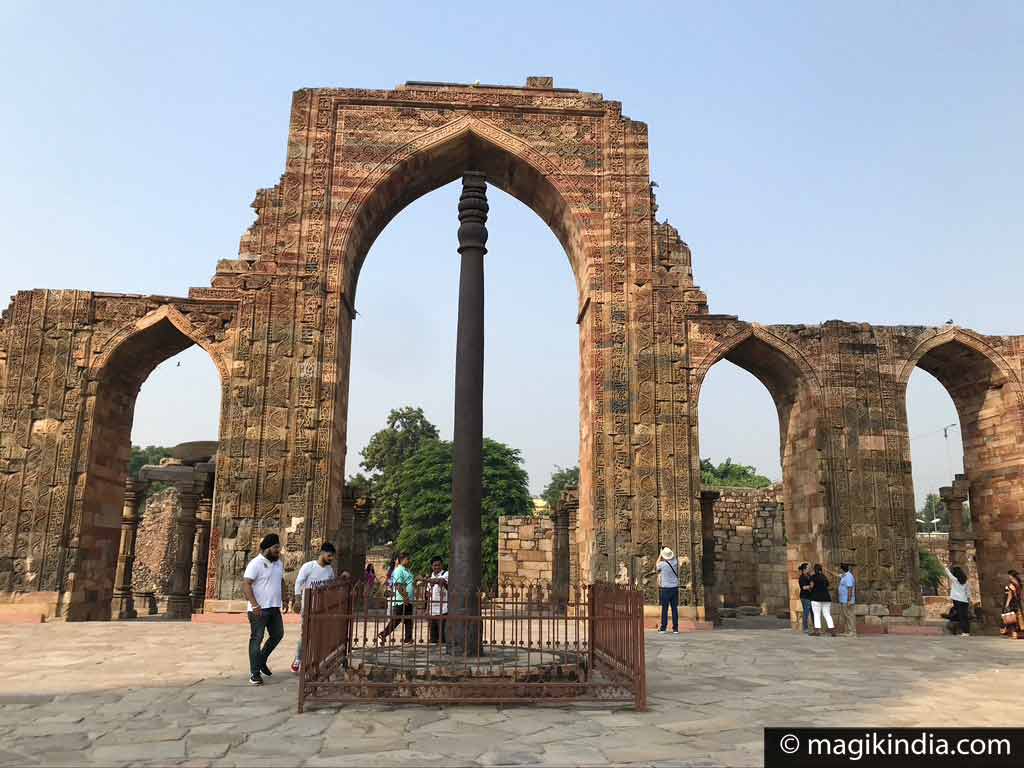
Baha’i, Lotus Temple
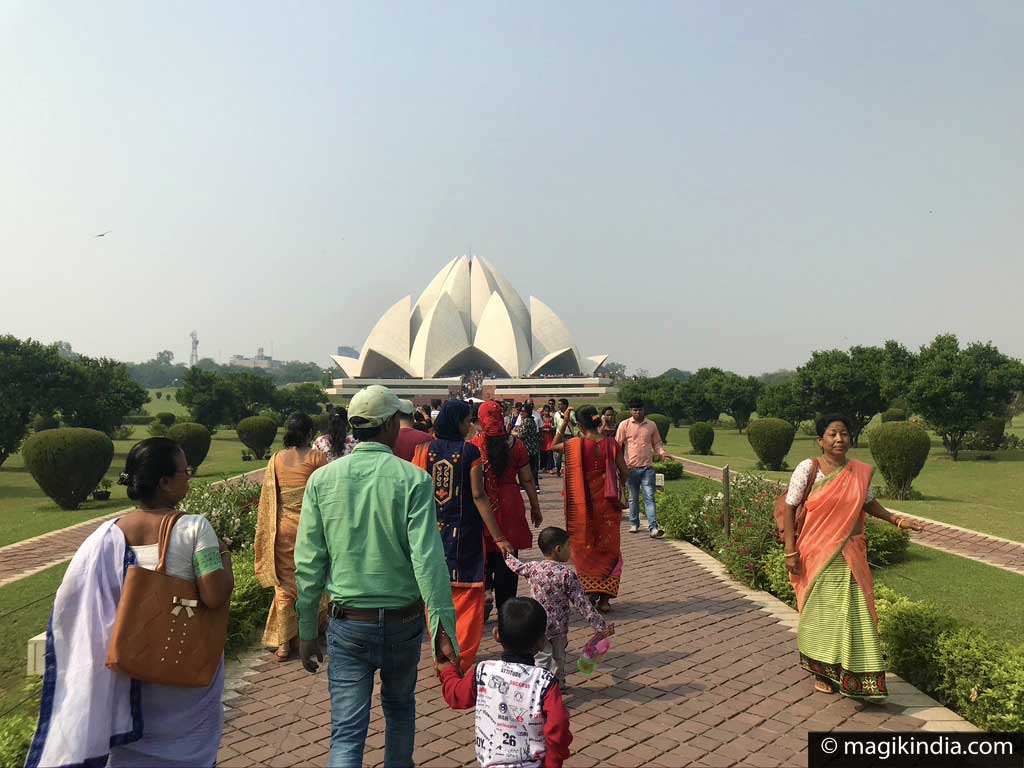
This is one of Delhi’s best-known buildings owing to its unique lotus-shaped profile. It is dedicated to the unity of all humanity’s religion a central theme of the Baha’i faith. This religion emerged in Persia in the 19th century.
Its founder was Baha’u’llah, a Persian nobleman and bearer of a spiritual message whose aim was to establish unity among all humanity’s religions. The lotus temple is regarded as the mother house of the Baha’i faith.
Akshardham Temple
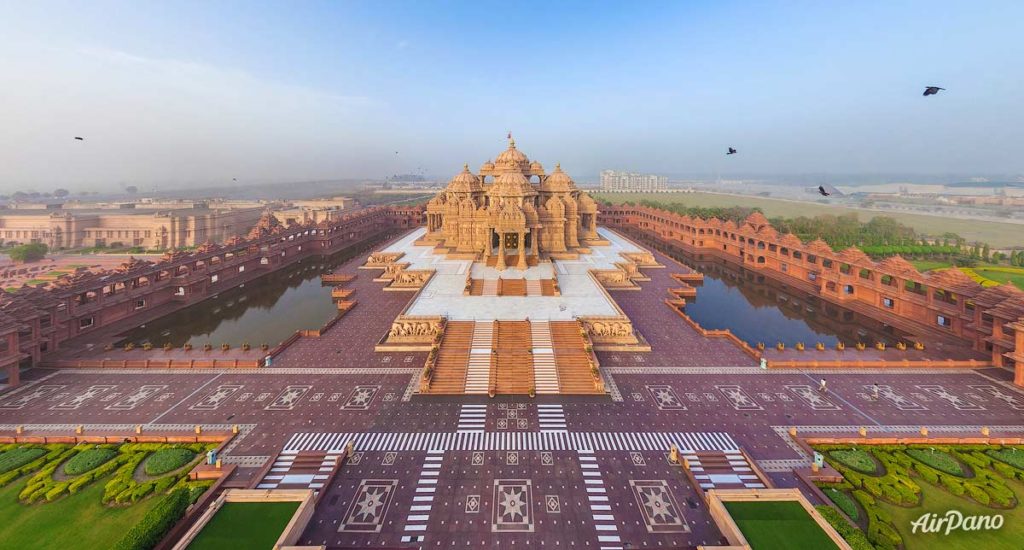
Akshardham is an absolutely gigantic temple dedicated to Swaminarayan (1781-1830), a central figure of the modern form of Hinduism.
Swaminarayan’s teachings are found in the Vachanamrut, the main theological text of the mission. For Swaminarayan, the ultimate goal of life is moksha, a spiritual state of ultimate liberation from the cycle of births and deaths which is obtained by a spiritual effort called “ekantik dharma” that is to say the detachment from things material world, and through “bhakti”, an absolute devotion to God.

It was inaugurated in 2005. The main building is 109m long, 96m wide and 43m tall. The beauty of the architecture and stonework leave one lost in admiration. There are no less than 200 sculptures of great saints, sadhus, devotees and avatars of Hinduism.

And what about the interior which is just as megalomaniac! The interior of the temple is divided into nine mandapams or thematic spaces whose pillars with complex sculptures are topped with breathtaking domes and ceilings.
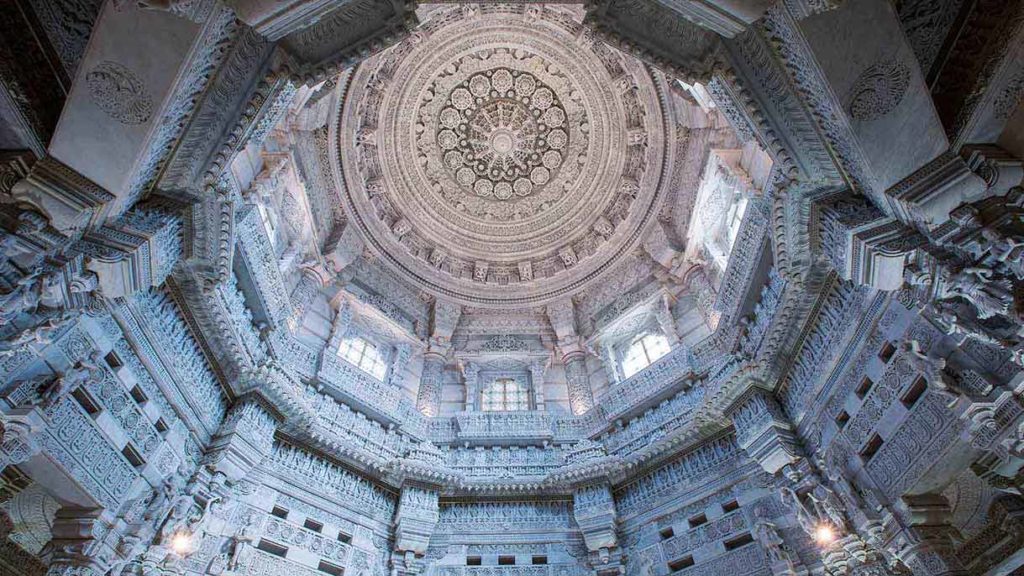
The main shrine, all in marble and gold, boasts “Bhagwan Swaminarayan” and its five spiritual successors: Gunatitanand Swami, Bhagatji Maharaj, Shastriji Maharaj, Yogiji Maharaj and Pramukh Swami Maharaj.
Around the garbhagruh, there are other altars dedicated to several Hindu deities: Sita-Ram, Radha-Krishna, Lakshmi-Narayan and Shiva-Parvati.
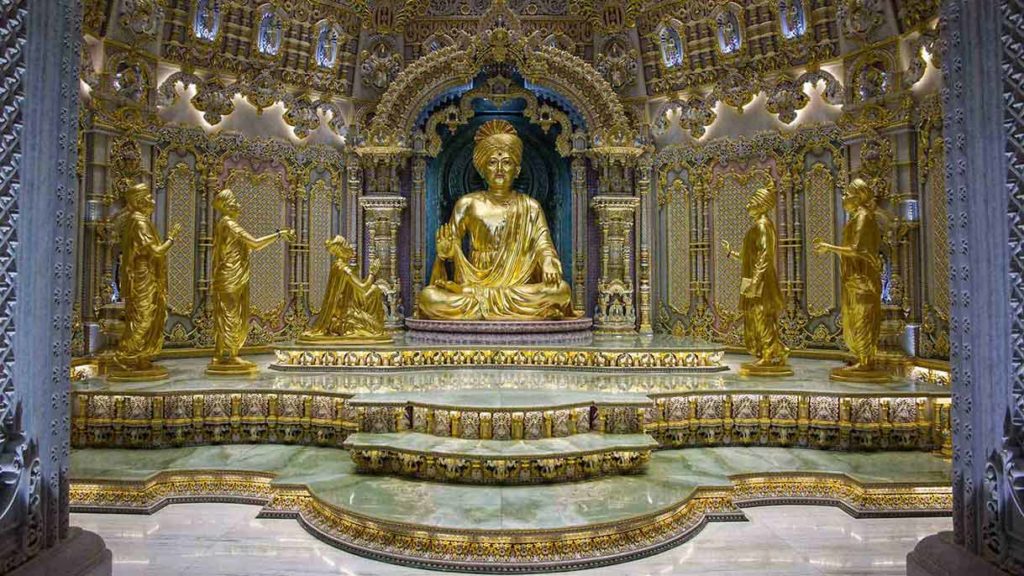
N.B: For reasons of security, photography is not allowed.
Gurudwara Bangla Sahib
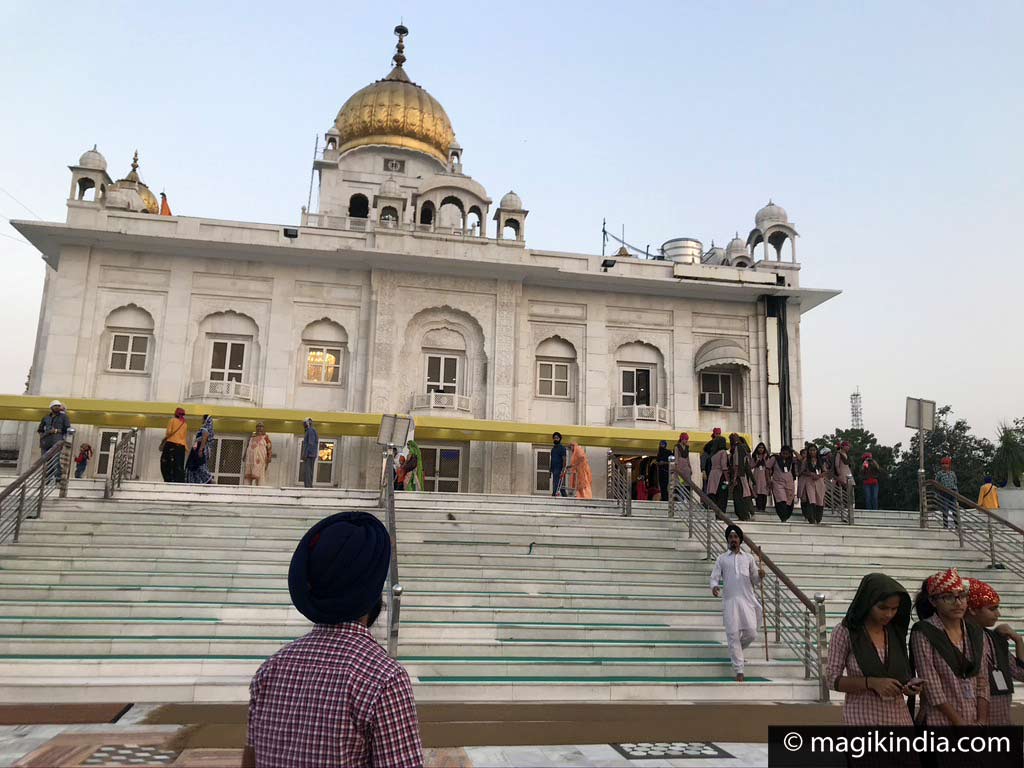
Located in New Delhi, not far from Sansad Bhavan, the circular Indian Parliament, Gurudwara Bangla Sahib is one of Delhi’s most popular places of Sikh faith. It is dedicated to Guru Har Krishan, the eighth Sikh Guru, who during a cholera epidemic, successfully treated people using the water from his well. Later, a pond (Sarovar) was built by the Raja Jai Singh above the well and its water is now considered to have healing properties.
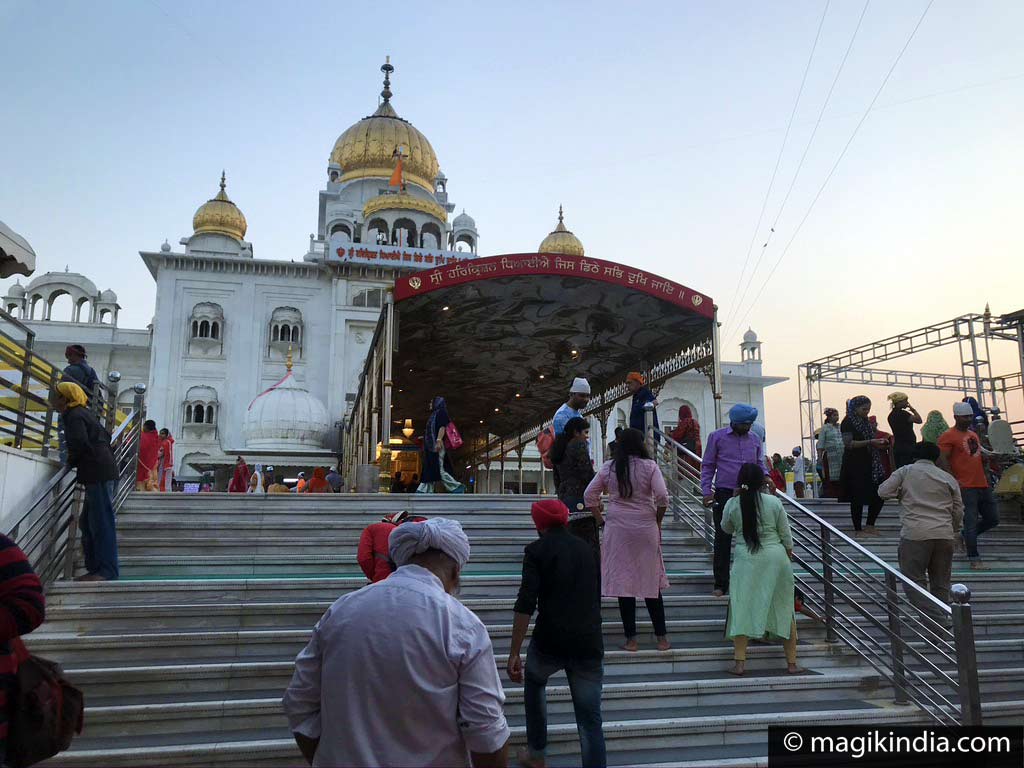
In addition to the immaculate architecture of Gurudwara, the atmosphere is very peaceful. Sit for a few moments in the central room and let yourself be carried away by the “Gurbanis”, the hymns sung from Guru Granth Sahib, the central text of the Sikhs.
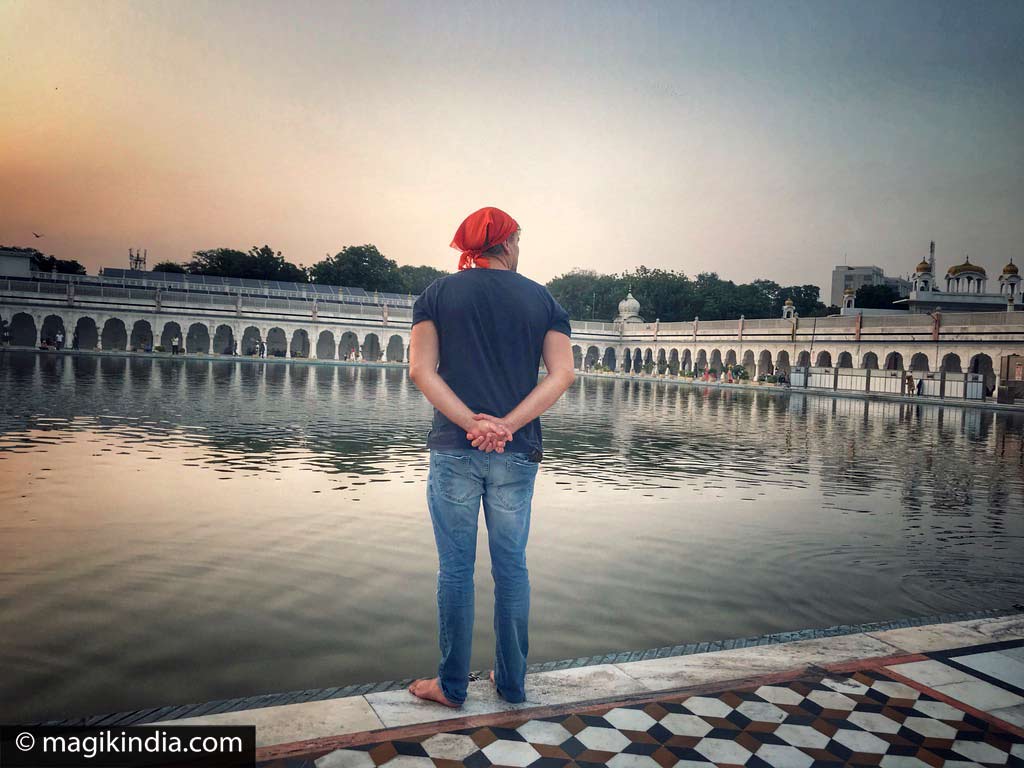
Dargah de Hazrat Nizam ud-din
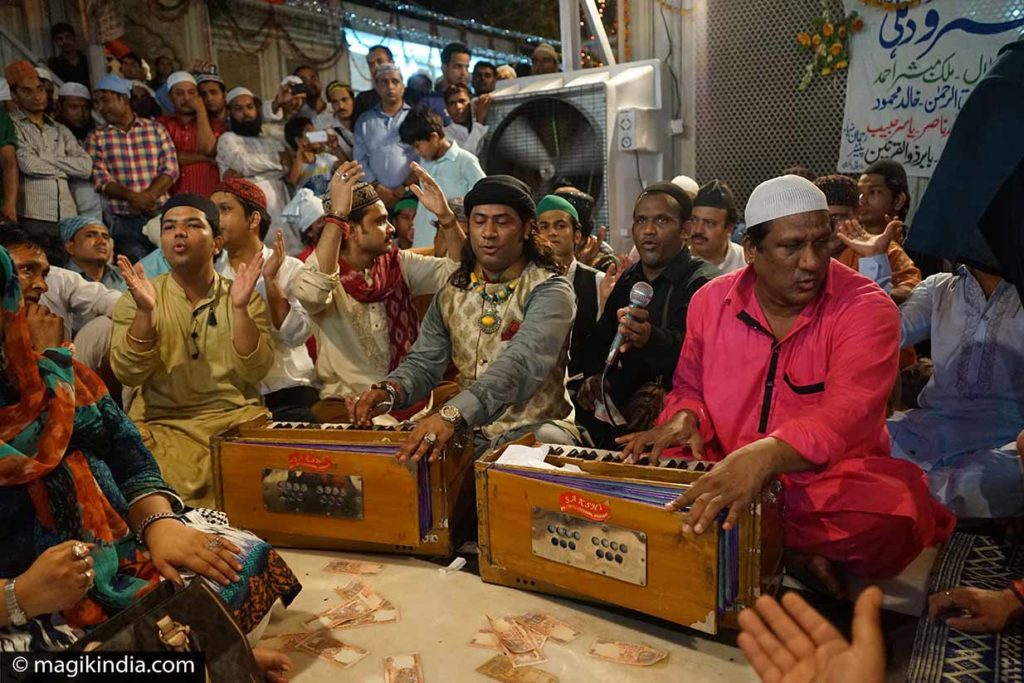
To end your tour of Delhi in style, I recommend you attend the Qawwalis songs at the Dargah of Nizamuddin. Hazrat Nizamuddin (or Nizam ud-din) Dargah is a sanctuary housing the tomb of Hazrat Khawaja Nizamuddin Auliya (1238-1325), a major Indian Sufi saint.
This place of intense faith attracts not only Muslim faithful but also people of other faiths. The spiritual fervour of this holy place reaches a peak in the evening, when qawwali singing and dhikr devotional chants ring out. A blessed atmosphere and a not-to-be-missed experience.
